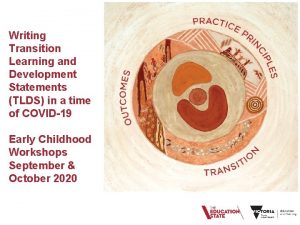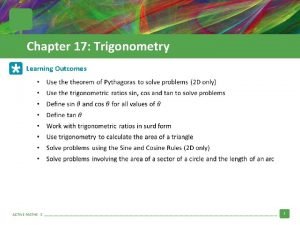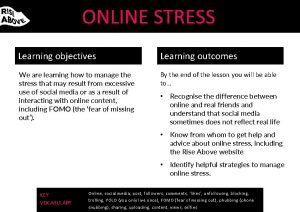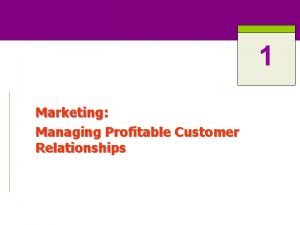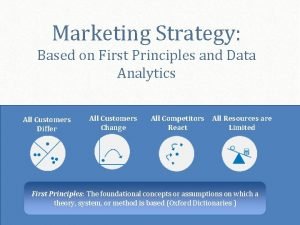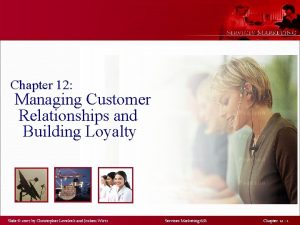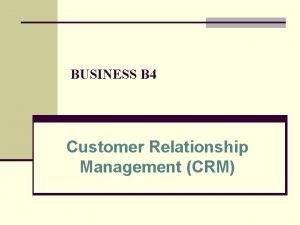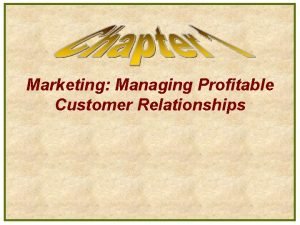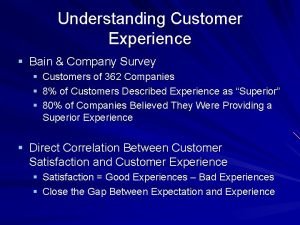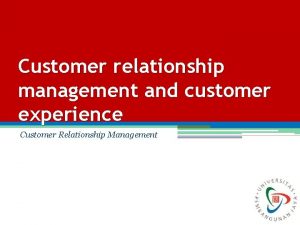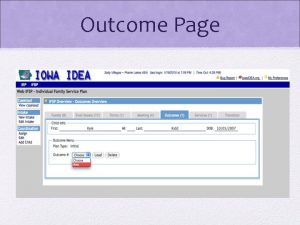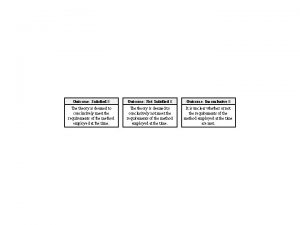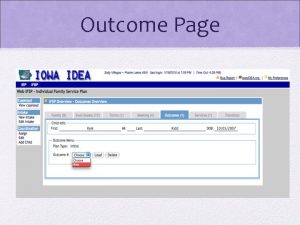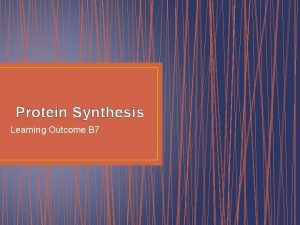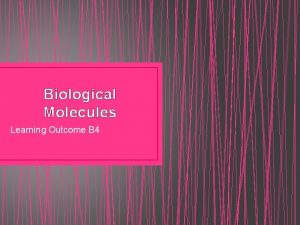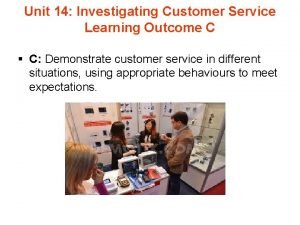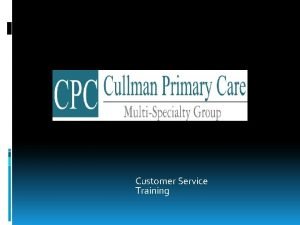UNIT 2 MANAGING THE CUSTOMER EXPERIENCE LEARNING OUTCOME



















- Slides: 19

UNIT 2 MANAGING THE CUSTOMER EXPERIENCE

LEARNING OUTCOME 2 EXPLORE THE CUSTOMER EXPERIENCE MAP TO CREATE BUSINESS OPPORTUNITIES AND OPTIMISE CUSTOMER TOUCH POINTS

P 4: DISCUSS HOW THE CUSTOMER TOUCH POINTS THROUGHOUT THE CUSTOMER EXPERIENCE CREATE BUSINESS OPPORTUNITIES FOR A SELECTED SERVICE SECTOR ORGANISATION

TOUCH POINT; WHAT IS Customer touchpoints in general are not often understood for what they really are, or appreciated from the customer’s perspective. Therein lies the problem. And they are more than just business jargon! They are meaningful only if and when the company understands them as a whole inventory, and as individual opportunities to improve the customer experience. Understanding your customers’ current situations, and what drives them toward loyalty or defection, is the first step in delivering a superior customer experience. Understanding the actual touchpoints your customers have with your organization is a basic part of that understanding.

SERVICE ENCOUNTER VS SERVICE EXPERIENCE There has been inconsistency in the terminology used to refer to customer-firm or customer-employee interactions in service contexts. In light of the need for a comprehensive service experience framework, especially problematic is the interchangeable use of the terms “service encounter” and “service experience. ” To suggest a specific protocol regarding the future use of these terms, we consider a recent take on their conceptualizations, and adapt the definitions of service encounter and service experience accordingly.

SERVICE ENCOUNTER VS SERVICE EXPERIENCE In their review of the literature on service encounters and service experiences, Bitner and Wang (2014) illuminate the distinction and relationship between the terms. The distinction essentially lies in the discreteness of service encounters (Bitner & Hubbert, 1994) and the continuous nature of a service experience.

SERVICE ENCOUNTER VS SERVICE EXPERIENCE In presenting a broadened framework for service experience research, we adhere to this distinction and extend the conceptualization of each term to account for the newly-defined pre-core, and post-core service encounter periods within a service experience. In line with Bitner and Wang (2014), we define service encounter as any discrete interaction between the customer and the service provider relevant to a core service o�ering, including the interaction involving provision o core service o�ering itself

SERVICE ENCOUNTER VS SERVICE EXPERIENCE This definition encompasses pre- and post-core encounters as well as those built into the core service provision as “moments of truth” that influence cumulative customer outcomes. Encounters have many forms and can be face-to-face in an actual service setting or online; they can also be over the phone, through the mail or even by catalogue (Bitner, Brown, & Meuter, 2000). Moments of truth are described as critical encounters between customers and firms that significantly impact customers' impressions of the firm and consumption (Beaujean, Davidson, & Madge, 2006; Bitner & Wang, 2014; Löfgren, 2005).

SERVICE ENCOUNTER VS SERVICE EXPERIENCE We define service experience as the period during which all service encounters relevant to a core service o�ering may occur. This concept comprises pre- and post-core encounters, as well as the encounters built into the core service provision as “moments of truth” that influence customer outcomes. This conceptualization widens the lens through which we view service experience by highlighting the pre-core, core and postcore service encounter periods

MOMENTS OF TRUTHS Moments of truth are those interactions where customers put in a high amount of energy to reach a satisfactory outcome. A company could have thousands of moments of truth in a single day. Whether adversely or favourably, they incredibly affect companies’ relationship with customers and their perception about the brand.

MOMENTS OF TRUTHS Moments of truth are those interactions where customers put in a high amount of energy to reach a satisfactory outcome. A company could have thousands of moments of truth in a single day. Whether adversely or favourably, they incredibly affect companies’ relationship with customers and their perception about the brand.

MOMENTS OF TRUTHS • Moments of Misery • Moments of Mediocrisy • Moments Of Magic

ü ü EXAMPLE ü ü When you call to make a reservation to take a flight, When you arrive at the airport and check your bags curbside, When you go inside and pick up your ticket at the ticket counter, When you are greeted at the gate, When you are taken care of by the flight attendants onboard the aircraft, And when you are greeted at your destination.

MOMENTS OF MISERY These are complaints, problems, negative experiences, friction; anything less than a positive interaction. It’s not a matter of if you will ever have a Moment of Misery. It’s when. Even the best companies have them, but these great companies have trained employees and have a system on how to turn them around.

MOMENTS OF MEDIOCRACY Another word for mediocrity is average. In other words, not good or not bad. Just okay. Just satisfactory. And, satisfactory is not good enough to create loyalty. If you ask your friend how dinner was at a restaurant and the response is, “It was okay (in other words, satisfactory), ” you will probably want to spend your money elsewhere. Satisfactory or average is mediocre.

MOMENTS OF MAGIC The type of experiences you want to create for your customers are Moments of Magic, which are simply above average interactions. Don’t let the word magic fool you. Most people think that magic has to be over-thetop or a “Wow” type of customer interaction, but it doesn’t. It just has to be above average. However, the key is to be above average all of the time. That’s what the best companies do. They create customer interactions that are above average… all of the time. They are consistent and predictable.

EXAMPLE There are many obvious Moments of Truth when traveling: the passenger makes a reservation, checks bags on the day of departure, checks in at the ticket counter, is boarded at the gate, is greeted at the destination, and picks up the baggage at the baggage claim carrousel. However, in addition to these main touch points, or Moments of Truth, there are other times that the passenger may interact with employees of the airline. For example, a flight attendant from a different flight may wave or smile at the passenger as he or she walks by. While that is not a main Moment of Truth, it is still an important one. Every interaction, however remote, is an opportunity for the customer/passenger to form an impression.

BUILDING BLOCKS Human experience is complex, and mostly intangible. Yet the challenge of experience mapping is to uncover, little by little, critical information about your customers’ experiences. The key building blocks are Doing, Thinking, and Feeling, but to understand the full context of customer experience, we also consider Place, Time, Devices, and Relationships. Don't forget Channel and Touchpoints

BUILDING BLOCKS
 Managing marketing information
Managing marketing information Experience expectant vs experience dependent
Experience expectant vs experience dependent Early experience vs. later experience
Early experience vs. later experience Direct vs indirect experience
Direct vs indirect experience Learning outcomes generator
Learning outcomes generator Learning objectives of a poem
Learning objectives of a poem Veyldf learning and development outcome descriptors
Veyldf learning and development outcome descriptors Human actrapid sliding scale
Human actrapid sliding scale Learning outcome
Learning outcome Learning outcomes examples
Learning outcomes examples Examples of educational goals and objectives
Examples of educational goals and objectives Marketing is managing profitable customer relationship
Marketing is managing profitable customer relationship Stratxsimulations login
Stratxsimulations login Managing customer relationships and building loyalty
Managing customer relationships and building loyalty Involves managing all aspects of a customer relationship
Involves managing all aspects of a customer relationship Managing profitable customer relationships
Managing profitable customer relationships How to measure digital customer experience
How to measure digital customer experience Customer experience bain
Customer experience bain Radical customer experience
Radical customer experience Customer experience canvas
Customer experience canvas






